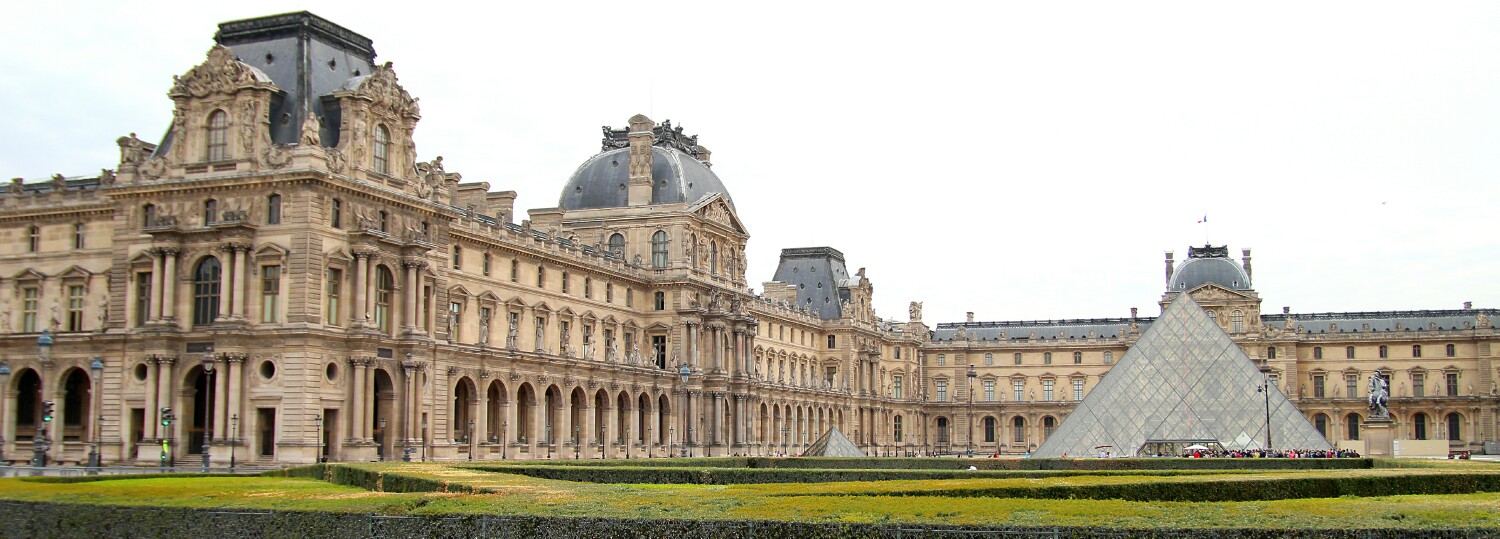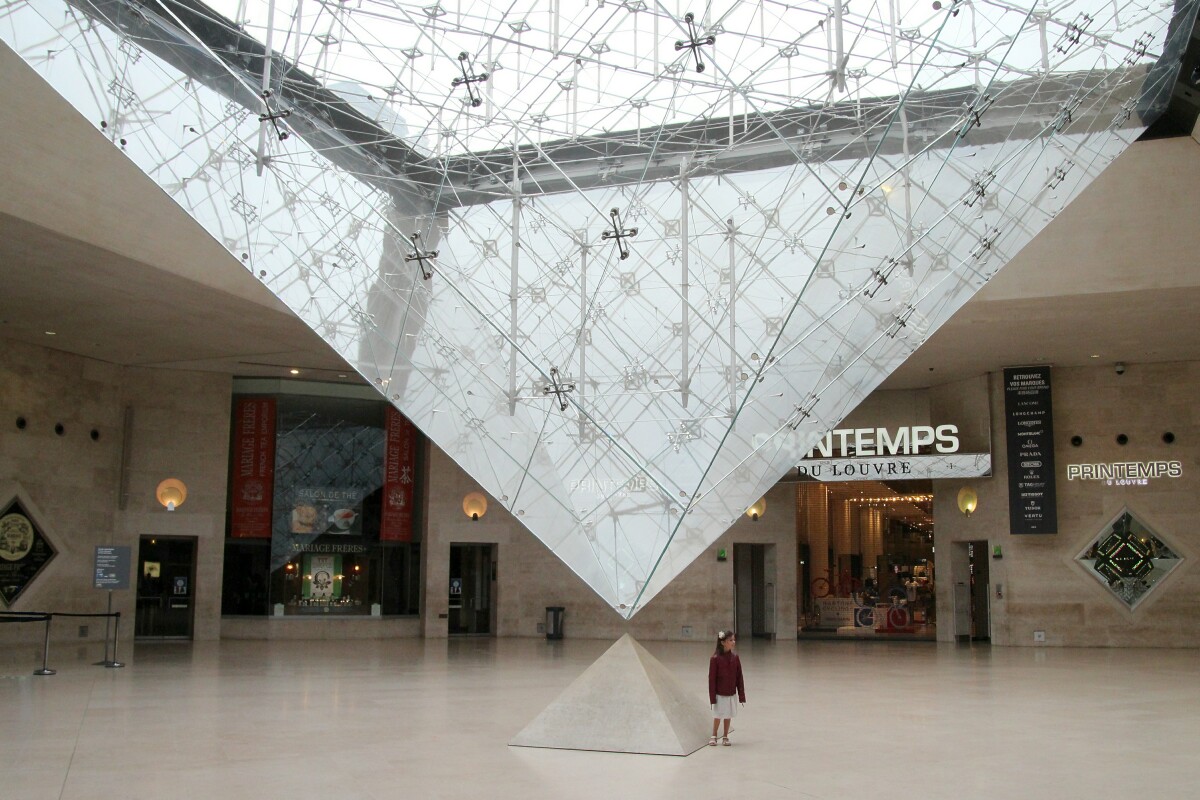|
On Day 12, it was again cloudy and cool, so a good day to check out the Louvre. I saw some of the paintings I enjoy viewing, but I checked out the Royal and Napoleon appartments
for the first time. After that, I went on the Champs Élysees to check out tickets to the Lido evening performance. After seeing the substantial price, that was the end of that,
so I triumphantly visited the monumental Arc de Triomphe, and then headed back to the French Quarter for dinner.
|

Above: The Musée du Louvre. The Louvre Palace was originally built as a fortress in the late 12th century under Philip II.
In 1682, Louis XIV chose the Palace of Versailles for his household, leaving the Louvre primarily as a place to display the
royal collection, including ancient Greek and Roman sculpture from 1692. During the French Revolution, the National Assembly
decided the Louvre should be used as a museum. The museum opened on August 10, 1793 with an exhibition of 537 paintings.
The museum reportedly displays 35000 paintings and 380000 objects of art in 652,000 square feet of display space.
Below: Pictures 1 and 2 are taken while in line below ground in the Carrousel du Louvre.
Picture 3 are Greek and Roman sculpture, the first room entered from the Denon entrance.
Pictures 4 to 6 are wall frescos by Sandro Botticelli, painted on the Villa Lemmi, a country villa near Florence owned by Giovanni Tornabuoni,
uncle of Lorenzo de' Medici and head of the Roman branch of the Medici Bank. The first two are "Venus and the Three Graces Presenting Gifts to a
Young Woman" and the third is "A Young Man Being Introduced to the Seven Liberal Arts". Both paintings were discovered at Villa Lemmi in 1873
under a coat of whitewash and removed from the wall and transferred to a canvas support. They were probably commissioned for the 1486 wedding of
Giovanni's son Lorenzo to Giovanna of the wealthy Albizzi Family, and both of them are believed to included in their respective frescos.
Pictures 7 and 8 show art work on the Louvre ceilings.
Picture 9, "Visitation", by Domenico Ghirlandaio.
Pictures 10 and 11 are from what is reported to be the world's largest painting, "The Wedding at Cana", by Paolo Veronese.

|
|